Rosenshine's Principles of Instruction APPLIED TO CLASSROOM PE TEACHING
Dear PE colleagues,
Look around you, please. Reflect on all the CPD training you receive. Reflect on the expectations that are placed on you to be contemporary and up-to-date with educational research. Reflect on how many times you have received specific guidance on a piece of educational research applied to your subject of PE teaching. My sense is that a huge volume of PE teachers are expected to teach PE in a classroom setting (which I adore, by the way) and are expected to do so successfully, despite having little to no training in classroom teaching at all and literally no training on how research in areas like pedagogy and cognitive science should be specifically applied to the subject of physical education.
We have a base issue in our sector. PE teachers, rightly, have the highest standards set for and expected of them with regard to qualification PE teaching, but receive little to no training on this specific skill set. This needs to change and, more importantly, can change.
It is my contention that any PE teacher who is, to some degree, measured by the impact of their qualification or classroom-based PE teaching, has the right to expect guidance on the best ways to achieve positive outcomes for students.
Think about the alternative: the alternative is:PE teachers who, to some degree, are measured by the impact of their qualification or classroom-based PE teaching, have no right to expect guidance on the best ways to achieve positive outcomes for PE students.
I believe that, as I write these sentences in 2025, the circumstances above in red are far more common than those in green. When one specifically reflects on the CPD that PE teachers receive being applied, specifically, to PE teaching, I argue that the red text summarises almost everyone’s experience.
Colleagues, I want to make a point to you:
If you are an expert in the principles of instruction, cognitive science, learning theories or in PE classroom pedagogy in general, this is in spite of the prevailing system, not because of it.
This situation needs to change, and to change now.
With these ideas in mind, I would like to write to you about Rosenshine’s principles of instruction in relation to classroom-based PE teaching. With the greatest of respect to teachers of other subjects (I personally teach both science and MFL as well as PE), I want you to forget about history classrooms or maths ones, or how Rosenshine’s principles work in classrooms in science or French. Just for a moment, this is not our concern, and I want you to consider, with no wider influence, classroom-based PE teaching only.
The statement that follows matters and, whilst only an opinion on my part, should be considered by PE teachers:
I believe that there is no other subject in a school curriculum that can benefit more from its teachers being well-honed in Rosenshine’s instructional principles than classroom PE teaching.
Our wonderful subject, the content and skills of which I have obsessed over my entire adult life, is ripe and prime to be taught with reference to Rosenshine’s work. Therefore, PE teachers –myself included– have the right to be trained in these skills in relation to our subject.
This is why:
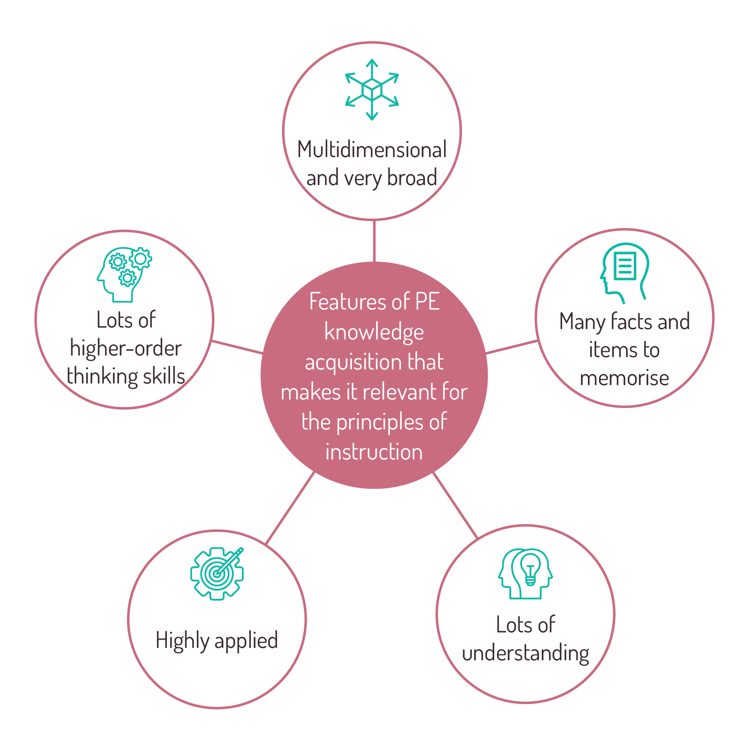 PE colleagues, our subject is amazing. Really now: it is amazing. PE teaching is one of my life’s loves. Beyond my family and friends, it is probably the thing I love the most in my life. But it’s also hard to learn how to do it well. I’ve occasionally said that teaching classroom PE is like learning Cornish. It’s rich and diverse and incredibly rewarding, but it’s bloody hard to do because the resources that you can get your hands on are few and far between, and there appear to be numerous barriers around every corner.
PE colleagues, our subject is amazing. Really now: it is amazing. PE teaching is one of my life’s loves. Beyond my family and friends, it is probably the thing I love the most in my life. But it’s also hard to learn how to do it well. I’ve occasionally said that teaching classroom PE is like learning Cornish. It’s rich and diverse and incredibly rewarding, but it’s bloody hard to do because the resources that you can get your hands on are few and far between, and there appear to be numerous barriers around every corner. Now, I can’t speak Cornish. But I have learned numerous languages as an adult, and some of those languages are well-resourced and available, such as Spanish and German. Basically, these languages are quite easy to learn because the stuff you need to learn them is available. But others are not. For example, I have learned to speak Catalan (the language of north-eastern Spain and south-eastern France) fluently over the last 25 years, and I have had to do so without any reliable resources at all. Literally, in 25 years of learning Catalan, I have managed to get my hands on a dictionary and two further guides, both of which are of questionable quality. We cannot have classroom-based PE teaching skills available to PE teachers in this limited format because, if we do, almost all PE teachers will be barriered from making the necessary journey.
Rosenshine’s work and how classroom PE teaching can learn it
Barack Rosenshine’s research is incredibly valuable to PE teachers as long as the findings are specifically applied to our subject.We have just published a full training course on Rosenshine’s principles in relation to classroom PE teaching as part of The PE Teacher Academy, and I urge PE teachers to get involved.
Rosenshine studied three areas of education:
- Master teachers
- Cognitive science
- Educational supports
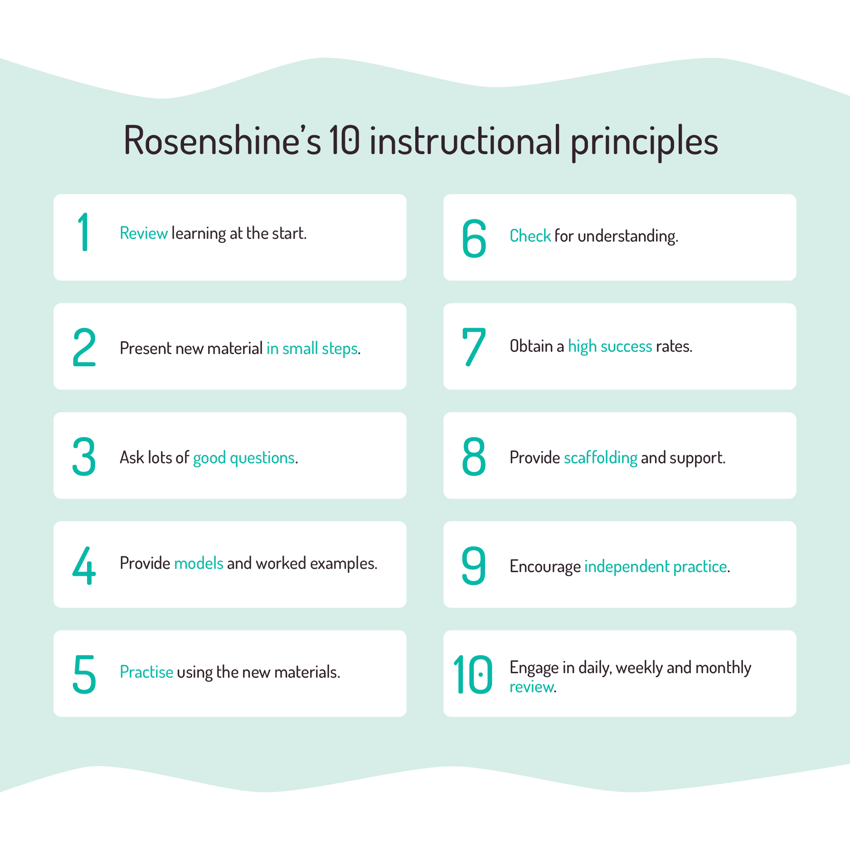 And this is where the generic learning of Rosenshine can end, and where we can start to think about PE teaching. If we render Rosenshine’s work down, there are three primary areas of consideration that a PE teacher should consider, and they are:
And this is where the generic learning of Rosenshine can end, and where we can start to think about PE teaching. If we render Rosenshine’s work down, there are three primary areas of consideration that a PE teacher should consider, and they are:

- Presenting new information to PE learners
- Modelling and guided practice of PE concepts
- Review and retrieval and PE concepts that have been learned
1. Presenting new information to PE learners
Recommended learning from The PE Teacher Academy:✅ Lessons 1-3 of Rosenshine’s Principles of Instruction Applied to PE Teaching
✅ Lesson 2 of Introduction to Cognitive Science for PE Teachers
✅ Lesson 5 of Introduction to Remembering and Forgetting in the PE Classroom
When PE teachers present new information to PE learners, there are some incredible opportunities and some clear pitfalls. Firstly, and most fundamentally, PE teachers are encouraged to recognise that all new PE learning –and we really do mean all– is learned in association with existing learning. There are no exceptions. The way the human mind works when exposed to new information is that the new stuff is encoded in association with existing frameworks, experiences or even emotions.
For this reason, Rosenshine advocates that PE lessons containing the reception of new learning must commence with a review of strategically selected previous learning or experiences. In other words, a PE teacher should take between five and eight minutes of the lesson to strategically cause the PE students to revisit relevant previous learning and to bring this learning back to the working memory through decoding:
 This, at times, can feel paradoxical to a PE teacher. We are preceding the learning of new ideas with reflection on older ideas. Whilst it may seem odd, it is exactly what we need to do. Furthermore, the PE teacher needs to make the connections between the older and the new material explicit. For example, if a PE teacher were introducing the new ideas of lung volumes to their GCSE PE group, say, they might specifically review cardiac volumes because the concepts are overlapping and the PE students may confuse them, especially their terminology. In this example, the PE teacher is explicitly informing the students that there are associations between the ideas and that they may initially confuse them.
This, at times, can feel paradoxical to a PE teacher. We are preceding the learning of new ideas with reflection on older ideas. Whilst it may seem odd, it is exactly what we need to do. Furthermore, the PE teacher needs to make the connections between the older and the new material explicit. For example, if a PE teacher were introducing the new ideas of lung volumes to their GCSE PE group, say, they might specifically review cardiac volumes because the concepts are overlapping and the PE students may confuse them, especially their terminology. In this example, the PE teacher is explicitly informing the students that there are associations between the ideas and that they may initially confuse them. But these are not the only considerations. Rosenshine instructs PE teachers to utilise these good practices and avoid the bad practices when introducing new learning:
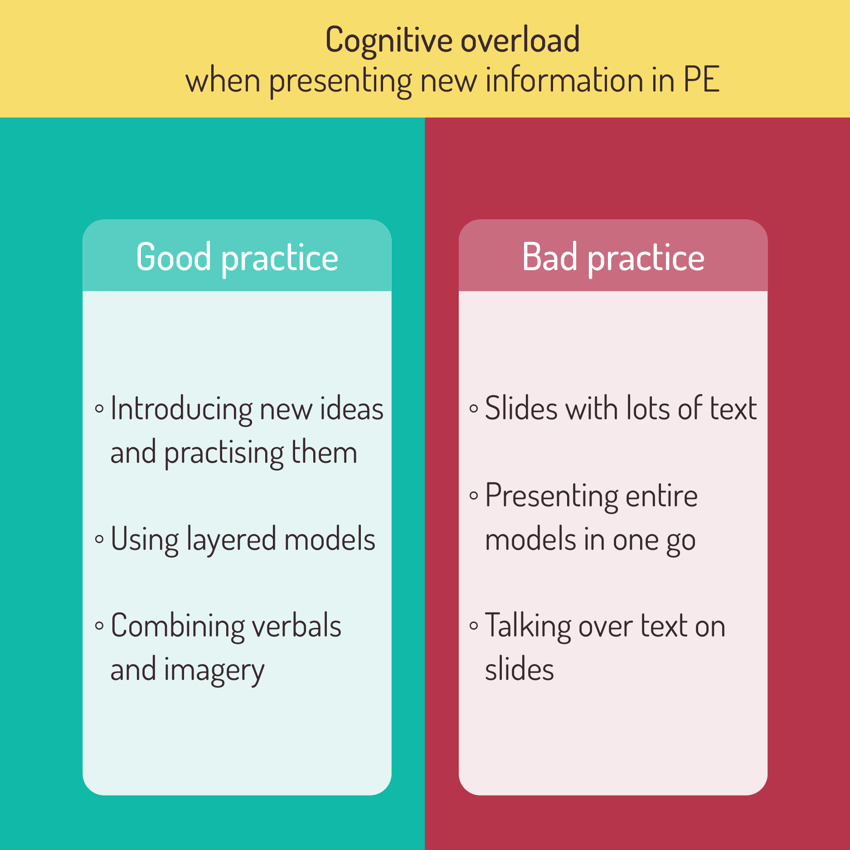
Everything on the left causes PE students to have a greater chance of successfully encoding new PE learning, and everything on the right is likely to limit the learning of new PE information.
2. Modelling and guided practice of PE concepts
Recommended learning from The PE Teacher Academy:✅ Lesson 4 of Rosenshine’s Principles of Instruction Applied to PE Teaching
✅ Lesson 5 of Introduction to Remembering and Forgetting in the PE Classroom
✅ Lessons 3-5 of Questioning Techniques in the PE Classroom Level 2
A second area of consideration is how PE teachers model behaviours for PE students. Please focus on the word “behaviours” from my previous sentence. I am confident that all PE teachers instruct PE learners on what to learn, but how frequently do PE teachers instruct learners on how to learn or perform it? My contention is that the latter is far less frequent and that, for this reason, modelling and guided practice in PE classrooms is required to a greater degree than currently.
Put simply, PE teachers need to show PE learners how they, as an expert, would complete a challenge. Let’s take an example. Let’s say that you want to cause the PE students to successfully learn how to plan a piece of extended writing in PE (a six-marker, a nine-marker or a 20-marker, say). A wonderful way to approach this is to use the “I do, We do, You do” model:
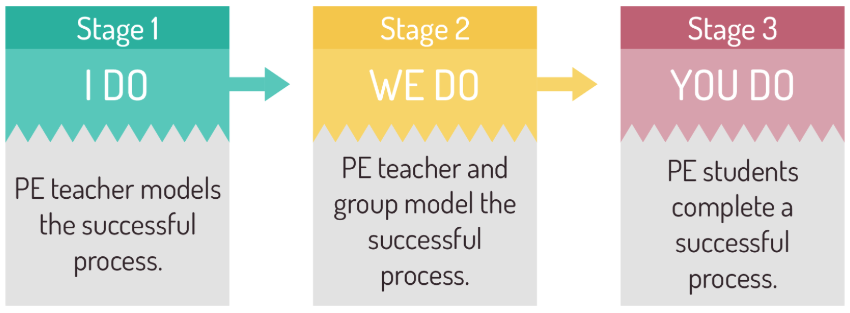
There are some nuances to this process, but I want to simply draw down on one:
This is about modelling HOW an expert would complete a tough problem.
PE learners –any learners– need to witness how a proficient individual would go about completing a challenging task in order to mimic this behaviour. This summarises the “I do” stage. The “We do” stage is all about collaboration, and about the PE learners experiencing having a go at the task with support. It is only in stage three where we hand over responsibility to the PE learners.This practice can be described as metacognitive modelling, and whilst the terminology is not that important, it is a behaviour that we need to provide to more PE students in more PE classrooms. I have even pondered whether a shortfall in metacognitive modelling could explain why, across the entire PE sector, PE learners, on average, score far lower on AO2- and AO3-type assessment objectives than they do on the surface-level AO1. I will be publishing more on this idea going forward.
3. Review and retrieval of PE concepts that have been learned
Recommended learning from The PE Teacher Academy:✅ Lesson 4 of Rosenshine’s Principles of Instruction Applied to PE Teaching
✅ Entire course of Optimising Learning in PE Through Spacing
✅ Lessons 4-6 of Questioning Techniques in the PE Classroom Level 1
✅ Lessons 1-2 of Questioning Techniques in the PE Classroom Level 2
✅ Lesson 2 of Feedback in the PE Classroom Part 1
Rosenshine clearly shows PE teachers that spaced review has a deep impact on the tendency for PE learners to be able to remember ideas and skills over time. In fact, research on the spacing effect clearly shows that:
Spaced review is the only proven way to delay or prevent forgetting in the minds of PE learners.
Rosenshine encourages review in a format similar to: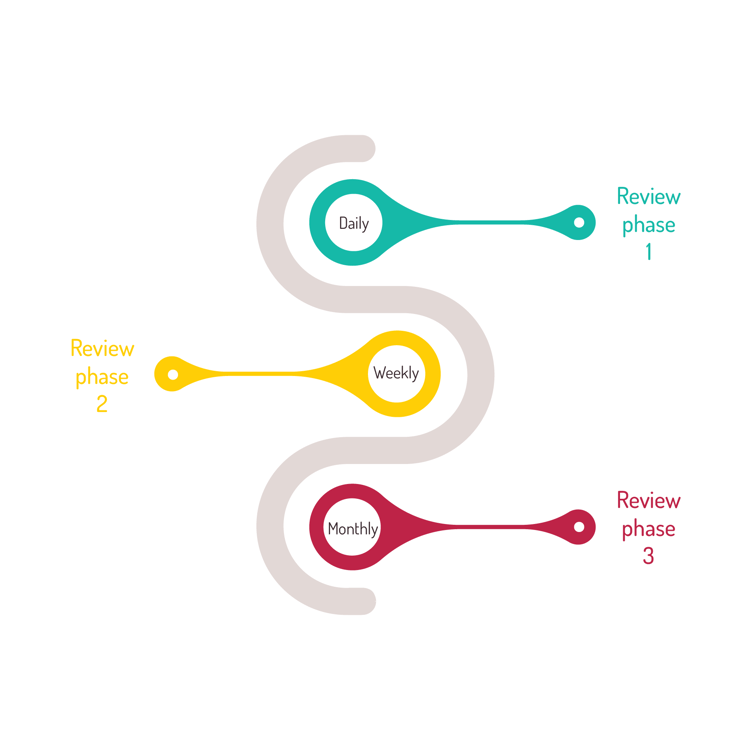 This type of consideration in a PE course would lead to a concept called the spiral curriculum, and the output could be something like this:
This type of consideration in a PE course would lead to a concept called the spiral curriculum, and the output could be something like this: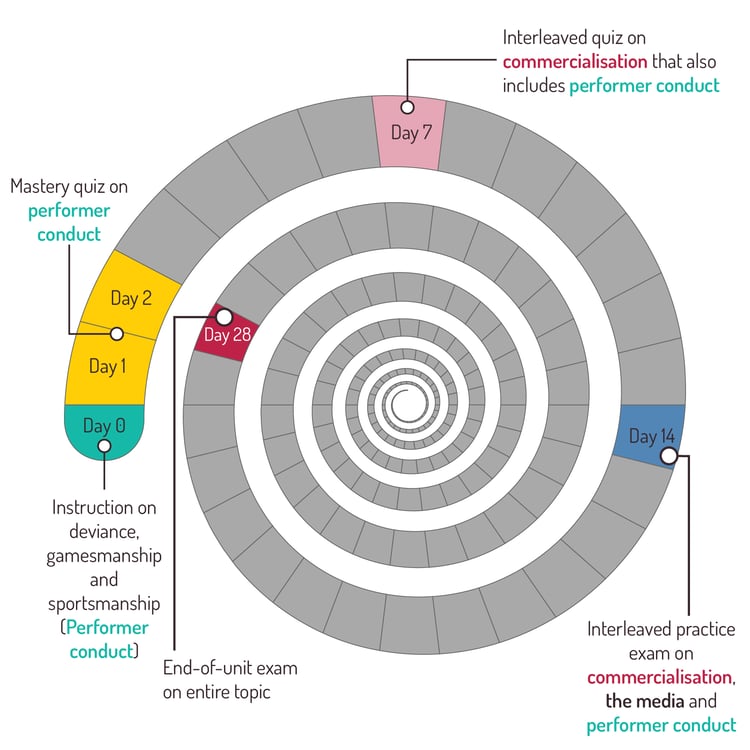
Take a moment to reflect on this image. The PE teacher utilising a format like this is clearly considering the role of the spacing effect in their curriculum.
PE colleagues, I ask you this question:
What would happen to PE student performance across our sector if they were to experience models dominated by such well-designed strategic use of spaced review?
Conclusions
If you have reached this point in the post, you have read a great deal. Thank you. But I also want you to recognise that I left out far more than I included in this post. I have cherry-picked the information that I think is most pertinent to a blog post from all the amazing stuff that Rosenshine has published.For this reason, I urge you to join me at The PE Teacher Academy. Remember that ongoing PE-specific CPD is there waiting for you and for your department, and I hope you may consider recognising the amazing and necessary opportunities that are already available for PE teachers everywhere. Please, always remember why I do what I do: this is my mission and my heart and the reason I give everything I can:
To radically improve the PE achievements of all students and transform the PE-teaching sector into the best-trained and highest-performing classroom teaching network in the world.
Imagine if we achieved that goal together. Imagine what life would be like on the other side of the goal. Please support me and my work by joining me at The PE Teacher Academy.%20Text%20(Violet).png)